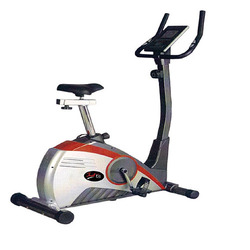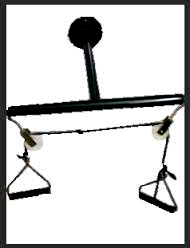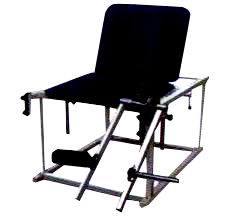How we do
In order to provide our clients with best possible treatment options, we put significant ongoing investment into our equipment. Our equipments includes fitness & rehabilitation machinery. We are able to help our clients recover from injury, increase their mobility, undertake personal-training and attain the highest level of fitness that they can. We have well equipped set up of physiotherapy and has all physiotherapy electronic modalities to serve people.
Mode of Action
- It reduces pain.
- It relieves the stiffness of the joints.
- It reduces the muscle tightness.
- It increases the blood flow to the area bt causing vasodilatation.
Benefits
- The heat theraphy warms up the tissues and readies it for the future excercise therapy.
Goal
- It aims to increase the temperature and increase the blood flow to the area of treatment.
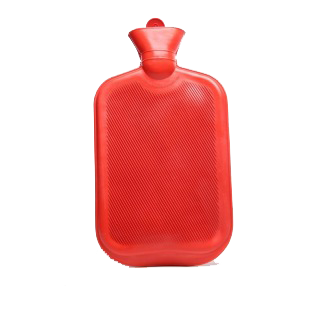
This is most popular and common form of heat therapy advised after fractures.Hydrocollator Packs contain silica gel which is encased in a canvas bag. This can be contoured to the various body regions.The heat delivered by the hydrocollator pack is a form of conductive heat.
Contraindication
- Open wounds.
- Anaesthetic Skin.
- Skin diseases and infections.
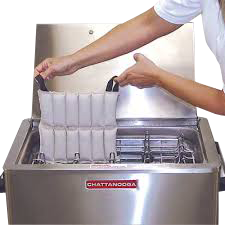
This consist of a mixture of one part of liquid petroleum to seven parts of paraffin.It is most often indicated to treat small areas like hands and feet (as in arthritis etc.)
Contraindication
- Open wounds.
- Anaesthetic Skin.
- Skin diseases and infections.
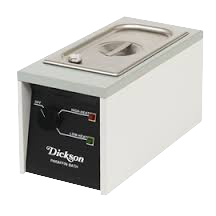
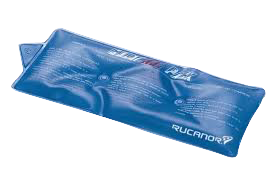
Types
- Continuous Ultrasound.
- Thermal effect to warm superficial tissues.
- Frequency of Ultrasound waves effects depth of tissues effected.
- Lower frequency waves penetrate tissues as deep as 2 inches or 5 cm.
- Pulsed Ultrasound.
- Non-thermal effect theoretically speeds tissue healing at the cellular level.
Contraindications
- Breast Implants.
- Epiphyseal plates.
- Eyes.
- Malignancies.
- Pacemakers.
- Thrombophlebitis.
- Laminectomy sites.
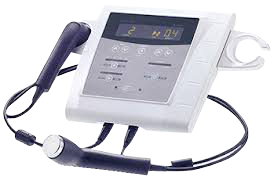
- Fibromyalgia.
- Joint injuries.
- Overuse injuries and surgical procedures.
- Edema, Inflammation.
- Carpal Tunnel Syndrome.
- Tennis Elbow.
- Sports Injuries.

Traction is usually advisable in following conditions:
- Spinal nerve root impingement.
- Joint hypo mobility.
- Spondylolisthesis .
- Extrinsic muscle spasm and muscle guarding.
- Discogenic pain.
- Joint pain.
- Lumbar disc disorders.
- Sciatica.
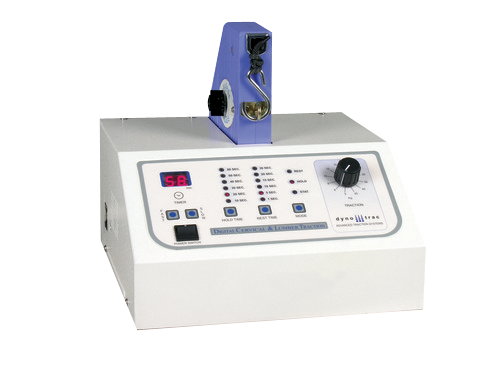
It also helps by
- Blocking the gate for pain sensation at brain level.
- Causing release of pain killers in brain.
- Increasing blood circulation.
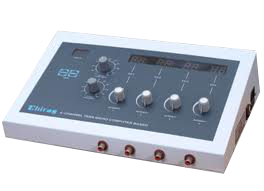
Types
- Modified Galvanic Current: In this treatment method the duration of current flow is long and continuous.Used in cases of severe nerve damage.
- Surged Faradic Current: Shorter duration and intermittent current flow.Used in cases of partial nerve damage or nerve compression
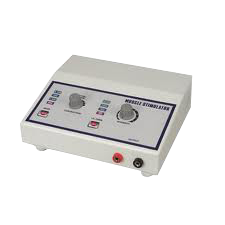
Here the patient is made to actively contract his/her muscles joints against resistance and weight. This helps to mobilize the joints, strengthen the muscles and to improve coordination or balance.
This can be given by the physiotherapist normally or by machines which can provide continuous passive movements of the joints. This helps to maintain the mobility of all the joints when active movements are not possible due to paralysis or injury to the muscles. Thus the joints are kept supple and deformities are prevented.
Manual Therapy is the application of "hands on" techniques delivered by the physiotherapist to the client. It involves gentle motions that encourage mobility at the joint and soft tissue levels.
Manual Therapy can be delivered in many forms. Myofascial Release is a form of Manual Therapy that encourages flexibility to the fascial system. The fascial system is a connective tissue that is continuous from head-to-toe. It is easily damaged by trauma and /or overuse. The therapist will apply long, slow stretching techniques that promote circulation to allow proper healing.
Joint Mobilization and manipulations are another form of Manual Therapy. These techniques are directed at encouraging specific motions at the joint surfaces. The degree of application of force is assessed and applied as appropriate.
Manual Lymphatic Drainage is a form of Manual Therapy aimed at the soft tissue. This technique involves the lymphatic system which assists in soft tissue health by supporting the circulatory system.
Massage therapy is a therapeutic intervention involving a range of manual techniques over the skin, muscles, tendons, ligaments and joints. Generally, massage therapy will improve the circulation of blood and lymph, decrease neuromuscular tension, reduce excessive scar tissue formation and relieve both chronic and acute pains.
The ultimate goals of massage therapy are to prevent injury, promote faster healing, improve posture and maintain general well being.
Do you have neck or back pain? When was the last time you took a look at your posture?
Most often, neck and back pain can either be caused by or further worsened by poor posture. Whether it is sitting at your desk or standing waiting for the elevator proper posture is imperative to maintain spinal and joint health. Here are a few tips for proper posture at your workstation:
- • Sit all the way back in your chair so that your low back is supported.
- • Keep your feet flat on the floor. If you do not reach the floor, invest in a foot rest.
- • Ensure your arm rests are set so that your forearm can easily rest on them with a slight bend in the elbows. This will limit the strain on your shoulders and neck.
If you think posture may be causing some of your pain, consult our physiotherapists.
Prenatal exercise
Pregnancy is a time where the female body experiences many physical and emotional changes. Participating in a gentle exercise regime may maximize the ability of your body to adapt to these changes.
In this you will be provided with valuable information on:
- Physical and physiological changes expected during pregnancy.
- How to get relief from common pregnancy related discomfort such as shortness of breath, rib pain, swelling, varicose veins, haemorrhoids, cramps, constipation.
- Posture and proper body mechanics to help prevent the onset of pregnancy related back and pelvic pain.
- Guidelines for practicing safe cardiovascular exercises.
You will be going through a variety of functional core exercises that will help you to:
- Strengthen and maintain the correct flexibility of the pelvic floor, abdominal and back muscles.
- Prevent onset of urinary incontinence, diastasis recti, sacroiliac, symphysis pubis, mid and low back pain.
By attending these sessions you will dramatically improve your posture during pregnancy, help prevent onset of pregnancy related aches and pains and facilitate labour.
Post natal exercise
During the postnatal period, it is important to properly rehabilitate your body from the many physical stresses experienced during pregnancy, labour and delivery. You are probably keen to return to your pre pregnancy exercise regime to lose the baby fat and restore your figure, but the order in which you do this is very important, in order to prevent strains on your pelvic floor, abdominals and back.
This sessions are offered on a one-on-one basis to ensure the exercise regime is meeting your specific individual needs and that you have proper form as muscle function is restored. A good time to start the exercises sessions is between 6 to 8 weeks after delivery.
During theses sessions you will be provided with valuable information on:
- How to eliminate bad postural habits caused by pregnancy related weight gain and hormonal changes.
- Body mechanics when caring for your newborn child.
- Proper progression of exercises to get you back to your pre-pregnancy sportive activities.
You will be going through a variety of functional core exercises that will help you to:
- Restore the strength of the pelvis, abdomen and back muscles weakened by the pregnancy.
- Restore the flexibility of the back, chest, hip muscles shortened during pregnancy.
- Help you regain your pre-pregnancy size, weight and physical activity level.
By attending these sessions, you will ensure that your core is strengthened in a healthy way, as recommended in the literature, to help prevent and correct urinary incontinence, neck, back and pelvic pain.
Benefit are:
- Increase strength of the upper limb muscle.
- Increase joint range of motion.
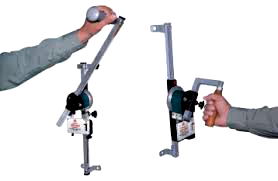
- Ideal for the progressive range for the shoulder motion.
- Improves strength of upper limb muscle.
- Increase flexibility of joints.

HAND GRIP EXERCISER
- It is used for hand rehabilitation. It helps in increasing range of motion of all the finger.
- It increases the strength of the muscles of the hand.
- It is used as a progressive resisted exercise for hands.
ANKLE EXERCISER
- It is a therapeutic device used for strengthening dorsiflexors and planterflexors of the ankle joints.
- Increase ankle joint range of motion.
- Improving joint flexibility.
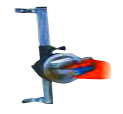
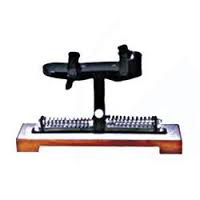
These are specially designed for the improvement of motor skills of the hand.
Benefit are:
- Improves strength.
- Improves gripping activities.
- Helps in prehension and precision training.
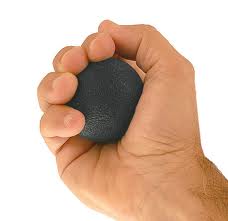
Swiss ball are inflatable balls made of soft elastic with a diameter of approximately 35 to 85 cm filled with air. This equipment is effective at targeting core muscle, which are essential for stability and good postures.
Benefit are:
- Posture reeducation.
- Increase lumbar mobility.
- Increase balance and stability.
- Develop overall control and strength of the core body muscle.

Static Cycle
In comparison with other exercises cycling is a relatively ‘knee friendly’ activity that can help to improve knee joint mobility and stability. Cycling is frequently used as a rehabilitation exercise modality after knee injury or surgery as well as part of the management of chronic degenerative conditions such as osteoarthritis.
Benifits
- Increase or restore knee joint range of movement
- Increase or restore knee joint stability.
- Increase or restore the strength of muscles around the knee.
- Decrease or eliminate pain.
- Prevent reoccurrence of the injury.
